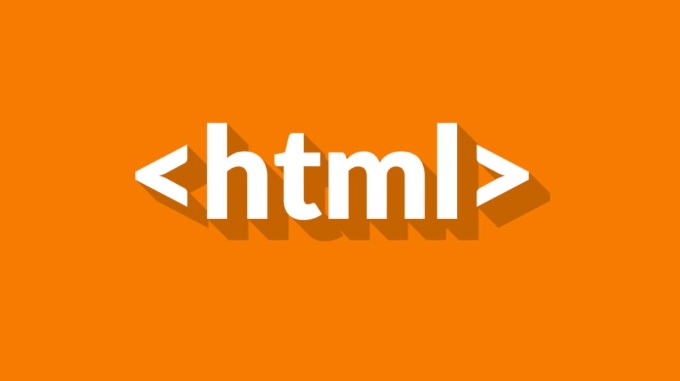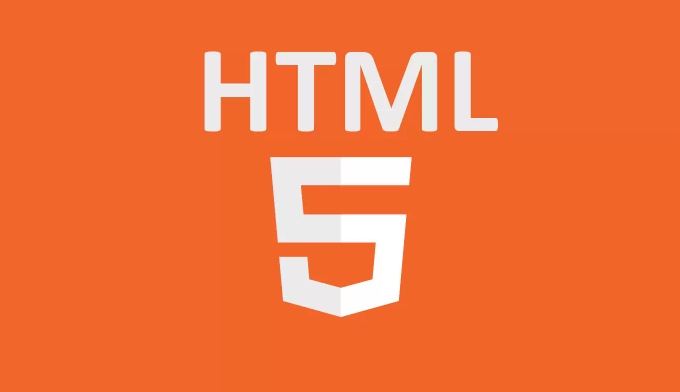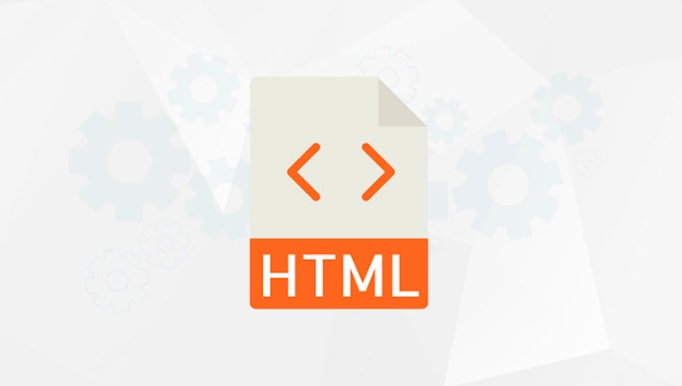The tag is used to define reusable HTML templates that are not rendered immediately, and is commonly used to dynamically generate page content. It is not displayed directly, does not affect the initial performance, and is a pure front-end concept. Its uses include avoiding duplicate code, improving performance, and clear structure and easy maintenance. The usage process is divided into three steps: defining the tag, obtaining the template content through JavaScript, and inserting the DOM. The examples include defining templates, cloning content, and modifying data before inserting the page. The key method is document.importNode() to implement deep cloning. Common scenarios include Web Components development, dynamic list display, and lightweight framework alternatives.

The <template></template> tag in HTML is actually quite clear in purpose but is easily overlooked. Simply put, it is used to define a reusable content template that is not immediately rendered . The most common scenario is to dynamically generate page content with JavaScript.
 tag used for?" />
tag used for?" /> What is the <template></template> tag?
You might confuse it with the backend template engine, but HTML's <template></template> is a pure front-end concept. The HTML content inside it will not be displayed directly when the page is loaded, nor will it affect the initial rendering performance. You can understand it as an HTML fragment "hidden" in the page, and then take it out when you need it.
Why use the <template></template> tag?
- Avoid duplicate code
- If you have a structure that often appears (such as list items, pop-up components), using
<template></template>can avoid writing a bunch of duplicate HTML or relying on JS spelling strings.
- If you have a structure that often appears (such as list items, pop-up components), using
- Improve performance
- When the page is loaded, the browser will not parse whether the content in
<template></template>needs to be rendered, so it will not cause unnecessary re-arrangement and redrawing.
- When the page is loaded, the browser will not parse whether the content in
- Clear structure and easy maintenance
- Keeping templates together is easier to modify and debug than scattered in JS strings.
How to use the <template></template> tag?
The basic process can be summarized into three steps:
 tag used for?" />
tag used for?" />- Define
<template></template>in HTML - Get template content through JavaScript
- Insert content into the DOM
For example:
<template id="user-card">
<div class="card">
<h3></h3>
<p>Email: </p>
</div>
</template>
<script>
const template = document.getElementById('user-card');
const clone = document.importNode(template.content, true);
clone.querySelector('h3').textContent = 'Zhang San';
clone.querySelector('p').textContent = 'Email: zhangsan@example.com';
document.body.appendChild(clone);
</script>In this way, you will dynamically insert the template content.
 tag used for?" />
tag used for?" />Tip:
document.importNode()is a key method for cloning template content. The second parametertruerepresents a deep cloning, that is, it contains child nodes.
What are the common usage scenarios?
Web Components Development
<template></template>is often used with custom elements as a structural template for components.Dynamic list or card display
For example, after obtaining user data from the interface, the user card is rendered cycleically.Front-end framework alternative
If you do not use React, Vue and other frameworks, native JS with<template></template>is a lightweight implementation method.
Basically that's it. Although it is not a necessary tag, in the right scenario, <template></template> can make the structure clearer and the logic cleaner. Not complicated but easy to ignore.
The above is the detailed content of What is the tag used for?. For more information, please follow other related articles on the PHP Chinese website!

Hot AI Tools

Undress AI Tool
Undress images for free

Undresser.AI Undress
AI-powered app for creating realistic nude photos

AI Clothes Remover
Online AI tool for removing clothes from photos.

Clothoff.io
AI clothes remover

Video Face Swap
Swap faces in any video effortlessly with our completely free AI face swap tool!

Hot Article

Hot Tools

Notepad++7.3.1
Easy-to-use and free code editor

SublimeText3 Chinese version
Chinese version, very easy to use

Zend Studio 13.0.1
Powerful PHP integrated development environment

Dreamweaver CS6
Visual web development tools

SublimeText3 Mac version
God-level code editing software (SublimeText3)

Hot Topics
 Audio and Video: HTML5 VS Youtube Embedding
Jun 19, 2025 am 12:51 AM
Audio and Video: HTML5 VS Youtube Embedding
Jun 19, 2025 am 12:51 AM
HTML5isbetterforcontrolandcustomization,whileYouTubeisbetterforeaseandperformance.1)HTML5allowsfortailoreduserexperiencesbutrequiresmanagingcodecsandcompatibility.2)YouTubeofferssimpleembeddingwithoptimizedperformancebutlimitscontroloverappearanceand
 Adding drag and drop functionality using the HTML5 Drag and Drop API.
Jul 05, 2025 am 02:43 AM
Adding drag and drop functionality using the HTML5 Drag and Drop API.
Jul 05, 2025 am 02:43 AM
The way to add drag and drop functionality to a web page is to use HTML5's DragandDrop API, which is natively supported without additional libraries. The specific steps are as follows: 1. Set the element draggable="true" to enable drag; 2. Listen to dragstart, dragover, drop and dragend events; 3. Set data in dragstart, block default behavior in dragover, and handle logic in drop. In addition, element movement can be achieved through appendChild and file upload can be achieved through e.dataTransfer.files. Note: preventDefault must be called
 Audio and Video: can i record it?
Jun 14, 2025 am 12:15 AM
Audio and Video: can i record it?
Jun 14, 2025 am 12:15 AM
Yes,youcanrecordaudioandvideo.Here'show:1)Foraudio,useasoundcheckscripttofindthequietestspotandtestlevels.2)Forvideo,useOpenCVtomonitorbrightnessandadjustlighting.3)Torecordbothsimultaneously,usethreadinginPythonforsynchronization,oroptforuser-friend
 Adding Audio and Video to HTML: Best Practices and Examples
Jun 13, 2025 am 12:01 AM
Adding Audio and Video to HTML: Best Practices and Examples
Jun 13, 2025 am 12:01 AM
Use and elements to add audio and video to HTML. 1) Use elements to embed audio, make sure to include controls attributes and alternate text. 2) Use elements to embed video, set width and height attributes, and provide multiple video sources to ensure compatibility. 3) Add subtitles to improve accessibility. 4) Optimize performance through adaptive bit rate streaming and delayed loading. 5) Avoid automatic playback unless muted, ensuring user control and a clear interface.
 How can you animate an SVG with CSS?
Jun 30, 2025 am 02:06 AM
How can you animate an SVG with CSS?
Jun 30, 2025 am 02:06 AM
AnimatingSVGwithCSSispossibleusingkeyframesforbasicanimationsandtransitionsforinteractiveeffects.1.Use@keyframestodefineanimationstagesforpropertieslikescale,opacity,andcolor.2.ApplytheanimationtoSVGelementssuchas,,orviaCSSclasses.3.Forhoverorstate-b
 What is the purpose of the input type='range'?
Jun 23, 2025 am 12:17 AM
What is the purpose of the input type='range'?
Jun 23, 2025 am 12:17 AM
inputtype="range" is used to create a slider control, allowing the user to select a value from a predefined range. 1. It is mainly suitable for scenes where values ??need to be selected intuitively, such as adjusting volume, brightness or scoring systems; 2. The basic structure includes min, max and step attributes, which set the minimum value, maximum value and step size respectively; 3. This value can be obtained and used in real time through JavaScript to improve the interactive experience; 4. It is recommended to display the current value and pay attention to accessibility and browser compatibility issues when using it.
 HTML audio and video: Examples
Jun 19, 2025 am 12:54 AM
HTML audio and video: Examples
Jun 19, 2025 am 12:54 AM
Audio and video elements in HTML can improve the dynamics and user experience of web pages. 1. Embed audio files using elements and realize automatic and loop playback of background music through autoplay and loop properties. 2. Use elements to embed video files, set width and height and controls properties, and provide multiple formats to ensure browser compatibility.
 What is WebRTC and what are its main use cases?
Jun 24, 2025 am 12:47 AM
What is WebRTC and what are its main use cases?
Jun 24, 2025 am 12:47 AM
WebRTC is a free, open source technology that supports real-time communication between browsers and devices. It realizes audio and video capture, encoding and point-to-point transmission through built-in API, without plug-ins. Its working principle includes: 1. The browser captures audio and video input; 2. The data is encoded and transmitted directly to another browser through a security protocol; 3. The signaling server assists in the initial connection but does not participate in media transmission; 4. The connection is established to achieve low-latency direct communication. The main application scenarios are: 1. Video conferencing (such as GoogleMeet, Jitsi); 2. Customer service voice/video chat; 3. Online games and collaborative applications; 4. IoT and real-time monitoring. Its advantages are cross-platform compatibility, no download required, default encryption and low latency, suitable for point-to-point communication






